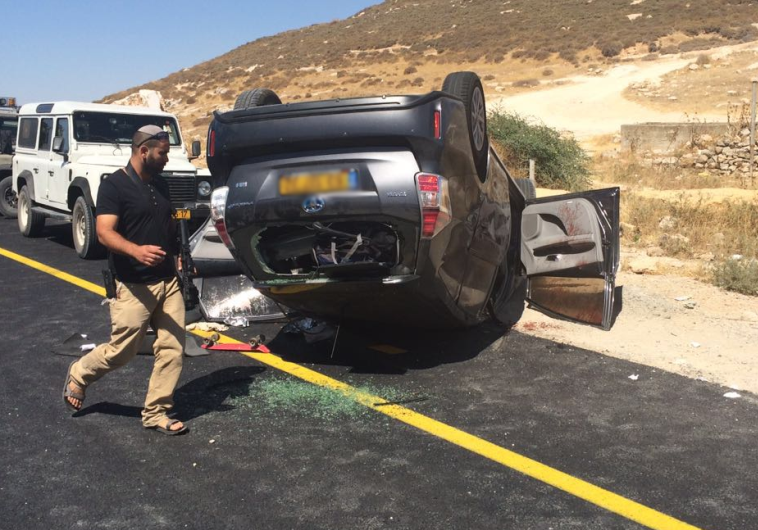Analysis: The dangers of a violent spiral
Is this a tolerable level of violence, which both sides are willing to absorb while they go about their daily routine?
 Shooting causes car to flip over on Route 60- July 1, 2016(photo credit: FIRE AND RESCUE SERVICE)
Shooting causes car to flip over on Route 60- July 1, 2016(photo credit: FIRE AND RESCUE SERVICE)